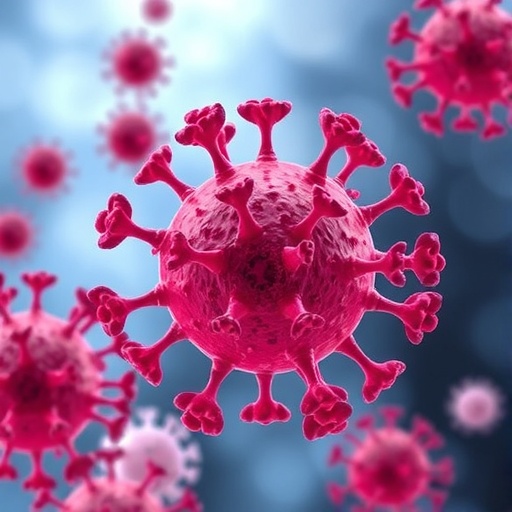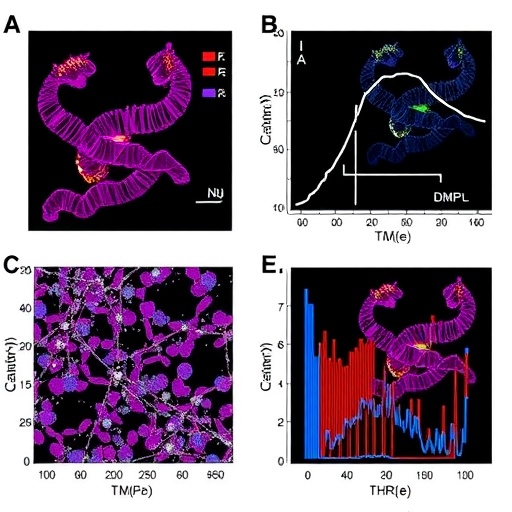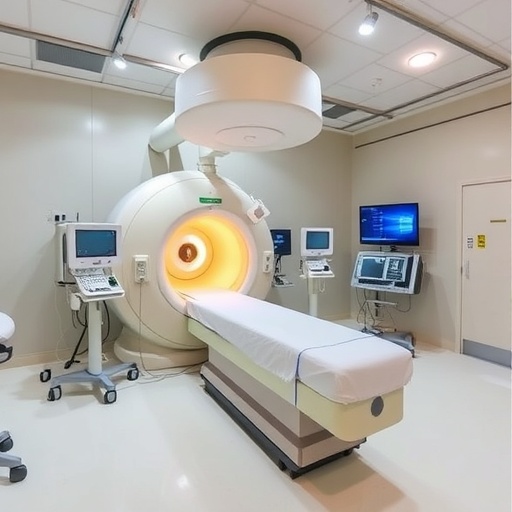PROTECT YOUR DNA WITH QUANTUM TECHNOLOGY
Orgo-Life the new way to the future Advertising by AdpathwayIn a groundbreaking stride towards revolutionizing drug delivery systems, researchers at Chung-Ang University in South Korea have developed an innovative microneedle patch that promises pain-free, long-lasting medication administration inspired by the natural mechanism of a bee sting. This novel technology offers a transformative approach that could profoundly impact the treatment of neurological and chronic diseases, addressing long-standing challenges of patient comfort, drug absorption, and sustained release. With its release published in Advanced Healthcare Materials, this advancement stands at the intersection of bioengineering, materials science, and pharmaceutical innovation.
Historically, conventional needle injections have been the standard for delivering a wide range of therapeutics, but their invasive nature often results in patient discomfort, pain, and poor compliance, especially during long-term treatments. Microneedles, typically micron-scale needles capable of penetrating the skin’s surface without reaching pain receptors, have emerged as a promising alternative. However, existing microneedle systems are frequently rigid and lack the flexibility needed for extended use, potentially causing irritation, discomfort, and detachment issues when worn over long periods.
The team led by Professor Wonku Kang and Dr. Sohee Jeon of the College of Pharmacy, along with Dr. Jun-Ho Jeong from the College of Medicine at Chung-Ang University, sought to address these critical limitations by drawing inspiration from the barbed and anchoring properties of a bee’s sting. The researchers devised a wearable microneedle patch called Electrospun Web Microneedles (EW-MNs), designed to mimic the unique structural characteristics of a bee sting, which naturally anchors into the skin to deliver venom efficiently and persistently.
The fabrication process of EW-MNs involves an advanced electrospinning technique that deposits ultrafine polymeric nanofibers onto conventional metal microneedles. Electrospinning, a method utilizing a high-voltage electric field to draw charged threads of polymer solutions into fibers with diameters at the nanoscale, produces a dense, interwoven fibrous scaffold around the microneedle tips. This fibrous web forms barbs akin to those found on a bee’s sting, enhancing the microneedle’s grip within the skin tissue and preventing premature detachment during prolonged wear.
These electrospun fibers are not just structural; they impart softness and breathability to the otherwise rigid metal microneedles, reducing skin irritation and improving wearer comfort. The microneedles are mounted onto a flexible adhesive patch with a backing layer, creating an ergonomic design that conforms seamlessly to the patient’s skin. This architecture ensures a stable, continuous, and minimally invasive drug delivery platform, especially critical for chronic neurological conditions where steady medication levels must be maintained without disrupting daily activities.
To validate their design, the research team loaded the EW-MNs with rivastigmine, a cholinesterase inhibitor commonly prescribed for managing Alzheimer’s and Parkinson’s diseases. Animal trials conducted on guinea pigs demonstrated remarkable enhancements in drug absorption compared to conventional transdermal delivery methods. The patches delivered over twice the amount of rivastigmine across a fivefold larger skin surface area, without causing significant discomfort or lasting skin damage. Mild skin irritation observed was transient and resolved promptly after removal, signaling a favorable safety profile.
The sustained and stable drug release from the EW-MN patches owes much to the barbed web structure, which firmly anchors the microneedles within the skin’s outer layers, securing intimate contact between the drug-loaded microneedles and interstitial fluid. This enhanced interface facilitates effective diffusion and absorption of rivastigmine into systemic circulation. Such steady pharmacokinetics mitigate the peaks and troughs commonly associated with oral or standard transdermal administration, potentially improving therapeutic outcomes.
Professor Kang emphasizes the transformative potential of this biomimetic approach, stating that these microneedle patches could redefine patient experiences by rendering needle-related anxieties obsolete. The design encapsulates a synergy between natural mechanisms and engineering prowess, yielding a patient-centric solution that is not only effective but also comfortable and user-friendly. The potential for self-administration further lifts the burden on healthcare systems and caregivers.
Looking beyond neurological disorders, the research team envisions broadening the applicability of EW-MNs to a variety of chronic ailments ranging from diabetes to cardiovascular diseases, where long-term, controlled drug delivery is paramount. Additionally, the technology’s gentle profile is particularly suited for vulnerable populations such as the elderly and children, for whom conventional injection methods pose difficulties. This expanded use could herald a new era of personalized, wearable therapeutics tailored to individual patient needs.
The concept of drawing inspiration from nature’s evolutionary designs is a recurring theme in biomedical engineering, and this study exemplifies how such biomimicry can spark innovations that address clinical shortcomings. By harnessing the bee sting’s anchoring mechanism, the EW-MNs achieve mechanical stability without sacrificing softness or flexibility—traits difficult to reconcile in previous microneedle platforms. This highlights an important direction for future research integrating materials science, nanotechnology, and biology.
Moreover, the incorporation of electrospinning technology underscores the versatility and precision achievable in fabricating therapeutic devices at the nanoscale. The ability to engineer intricate fibrous networks opens pathways to customizing microneedle interfaces to optimize drug release kinetics, skin compatibility, and mechanical adherence. As electrospinning methods advance, future microneedle devices may offer multifunctional platforms capable of delivering vaccines, hormones, or even gene therapies.
This pioneering research, publicly accessible via its DOI link, stands as an inspiring testament to interdisciplinary collaboration, uniting experts in pharmacy, medicine, and engineering at Chung-Ang University. By addressing a common impediment in patient care—the discomfort and inconvenience of injections—this technology brings us closer to a future where therapeutics are seamlessly integrated into daily life. In doing so, it promises to enhance adherence, therapeutic efficiency, and overall quality of life for millions suffering from chronic neurological and other systemic diseases.
In conclusion, the bee sting-inspired EW-MNs developed by Professor Kang and his team represent a significant leap forward in microneedle drug delivery systems. Their innovative design, utilizing electrospun nanofibrous webs to anchor soft microneedles securely in the skin, overcomes previous limitations by combining comfort, efficacy, and longevity. As this platform moves towards clinical applications, it holds the promise of revolutionizing patient-friendly, sustained drug administration, ultimately transforming the landscape of modern therapeutics.
Subject of Research: Animals
Article Title: Bee Stinger-Like Wearable Electrospun Web Microneedles for Sustained CNS Drug
News Publication Date: 31-Jul-2025
References: DOI: 10.1002/adhm.202501371
Image Credits: Professor Wonku Kang from Chung-Ang University
Keywords: Drug delivery, Medical equipment, Pharmaceuticals, Health and medicine, Microfabrication, Biomedical engineering, Disease control, Wearable devices, Biotechnology, Medical technology
Tags: bee-sting inspired microneedlesbioengineering and materials sciencechronic disease treatment advancementsflexible microneedle systemsinnovative drug delivery systemsinterdisciplinary research in healthcare technologymicroneedle patch technologypain-free medication administrationpatient comfort in drug deliverypharmaceutical innovation at Chung-Ang Universityrevolutionizing conventional needle injectionssustained release drug delivery


 8 hours ago
10
8 hours ago
10





















 English (US) ·
English (US) ·  French (CA) ·
French (CA) ·